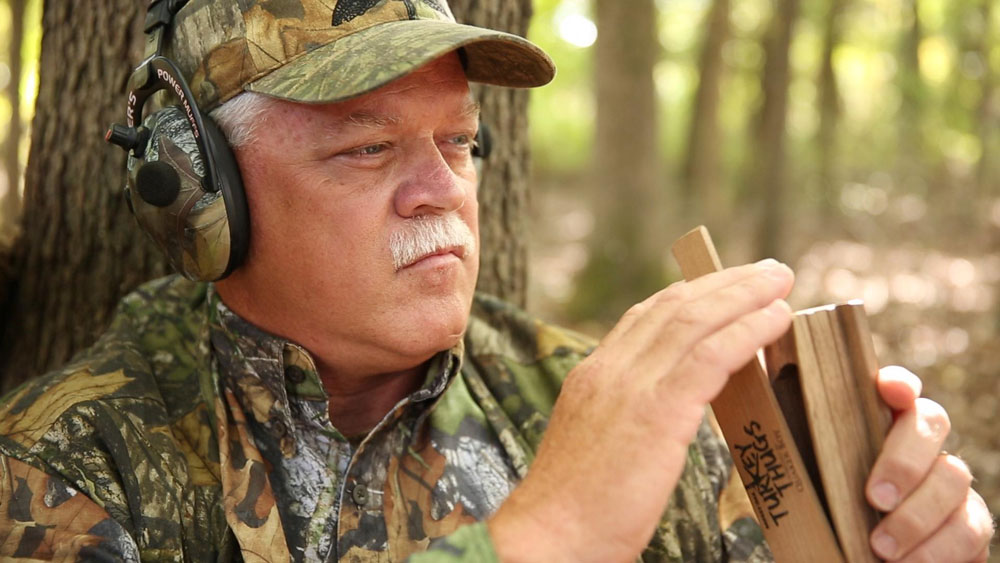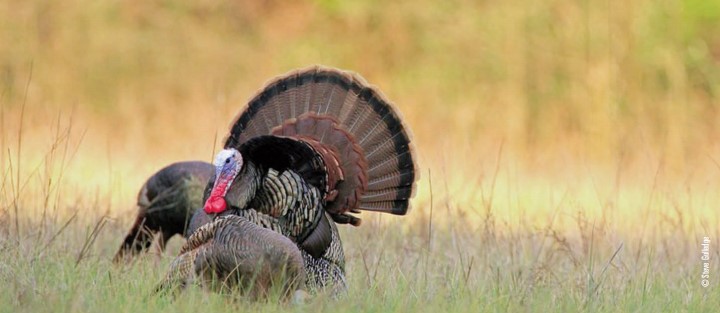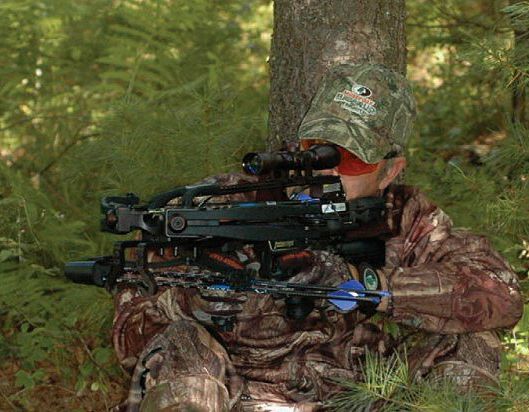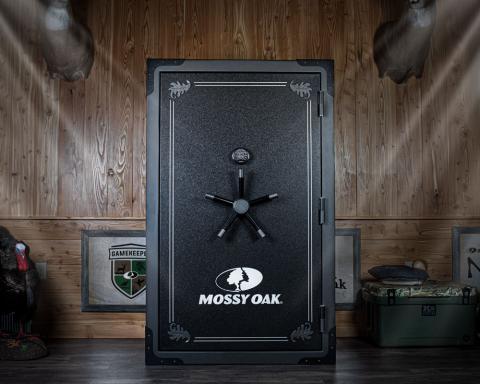Bob Humphrey | Originally published in GameKeepers: Farming for Wildlife Magazine. To subscribe, click here.
We take a lot for granted, not so much the sights and sounds we experience out of doors, but the mere fact we can see and hear them. We all appreciate the thunderous gobble of a randy longbeard or the tall tined rack and thickly swollen neck of a mature buck, but sometimes we overlook our miraculous ability to perceive them. And the consequences of not protecting those abilities can range from inconvenient to downright debilitating. Trust me. We’ve already touched on eye and ear protection in previous columns on shooting range and heavy equipment safety, but it’s all worth repeating, and expanding upon.

Listen Up
Let’s start with hearing. Sportsmen and land managers are exposed to far more potentially harmful noise than the average person…and it doesn’t take much. According to the CDC, the average 25 year old carpenter has the ears of a 50 year old person who has not been exposed to loud noise. Now imagine the hearing loss in a 50 year old person who has been exposed to the noise of heavy equipment, chain saws and gun fire, not to mention loud music, fast cars and whatever other tempting tones may have attracted us in our youthful exuberance.
And it’s not just loud noises that can damage our hearing ability. Prolonged exposure to seemingly harmless noise can be just as bad (see table).
| dBA | Limit |
|---|---|
| 85 | 8 hours |
| 88 | 4 hours |
| 91 | 2 hours |
| 94 | 1 hours |
| 97 | 30 hours |
| 100 | 15 minutes |
| 103 | 7 1/2 minutes |
| 106 | 3 3/4 minutes |
So what does all that mean? The average noise emission levels from a tractor, loader or other engine-powered equipment at a distance of 50 feet is about 85 dB. Simply being near them represents risk. Rev the engine, move closer or climb aboard and that level rises, significantly. For example, a chain saw has a sound intensity of about 110 dB. Running a saw for as little as two minutes without hearing protection could result in permanent hearing loss.
After the food plots are in and we head for the field the risk increases. The sound of a gunshot is off the charts. Every experienced hunter can attest it has an immediate effect, but we don’t really notice the long term, subtle loss in hearing until our loved ones point it out.
The solution is fairly simple. Use hearing protection whenever around or operating machinery, and wherever and whenever possible when guns are being fired. That’s fairly easy on the range, but in the field it’s not always practical to wear hearing protection. Deer and turkey hunters need their ears to hear a distant gobble or the nearly silent approach of a big buck. Chances are you’re only going to fire one shot so the risk is not as severe; though it still exists. Inside a shooting house you may want to reconsider some type of hearing protection. You’re not listening so much as looking, and it’s usually over a green field. Either way, get that muzzle out the window before firing. The same applies to ground blinds, to a lesser extent.

Turkey hunters often hunt with a partner. Shoulder to shoulder is okay but as the distance between hunters increases, so do the chances of someone’s ears being close to a muzzle blast. No turkey in the world is worth damaging your partner’s hearing, or worse.
Waterfowl hunting is a different story. Side-by-side in the tight confines of a blind and with potentially a lot of shooting you’re quickly going to exceed a tolerable level of exposure to harmful noise. At the very least, use ear plugs; and strongly consider muffs. Ear plugs aren’t a bad idea for upland bird and dove hunters either, particularly when hunting in a line.
Who carries a sound level meter with them? However, when a sound level meter is not available, OSHA suggests you use “the two to three foot rule.” Stand about an arm’s length away from your friend. If you have to raise your voice to be heard two to three feet away, you should assume that the sound level is at or above 85 dBA.
The Eyes Have It

protection whenever you’re outdoors, regardless of the activity.
I learned the hard way how quickly and unexpectedly a freak accident can take away our valuable senses when a flying projectile rendered me sightless in my right eye. It made the sight that remained in my left eye so much more precious.
Your eyes are exposed to all kinds of potential hazards outdoors. Mowers, tillers and disks are throwing objects around at dangerous speeds. Driving an ATV or tractor or even walking through the woods, especially in the dark, you could get poked or stabbed by a twig or branch. A strong wind could blow dust or grit in your eyes. When working on or with machinery there’s always the possibility of broken lines spraying hydraulic fluid, fuel, herbicides or pesticides in your eyes. On the range or in the field there’s burnt powder and spent casings flying around. And though gun and ammo manufacturers go to excruciating lengths to ensure their products are safe, equipment sometimes malfunctions. Mere exposure to the sun is unhealthy to the eyes. And then there are flying fish hooks.
The solution here is even simpler. Always wear proper eye protection when out of doors, the operative word being “proper.” Forget glass. You need lenses made of an impact-resistant, shatterproof material. You also want a rugged frame. A wrap-around design is better as it protects you from the sides as well. Some type of tinted lens is also a good idea when in direct sunlight, polarized lenses being the best. You at least want something with UV filtering capability as harmful UV rays can result in gradual sight degradation.
Different colored lenses enhance visibility under different conditions. Here are a few recommendations.
- CLEAR - Provides maximum light transmission allowing you to see precise color values, particularly in hazy or overcast, dusk/dawn conditions.
- GREY - Provides maximum glare reduction, a good choice for fishing and possibly waterfowling.
- BRONZE - Provides superior visual definition, increased contrast and enhanced ground level contours in most light conditions.
- PALE YELLOW - The best tint for enhancing contrast in low to extremely low light conditions, haze, etc.
- LIGHT RUST - Filters out blue light waves, the chief component of glare and haze, and enhances contrast in medium to low-light conditions.
- GREEN - Absorbs reflections across mirror surface and diminish glare, another good choice for fishing in bright conditions.
- VERMILLION - Sharpens contrast and brightens targets in medium to low light conditions.
Conclusion
When it comes to protecting your eyes and ears there’s no reason to be macho or complacent. Outdoorsmen, women and especially children are exposed to all sorts of potential dangers, the effects of which may be temporary or God forbid, permanent. Always wear proper protection to preserve your senses and set a good example for the next generation of hunters and anglers.




























